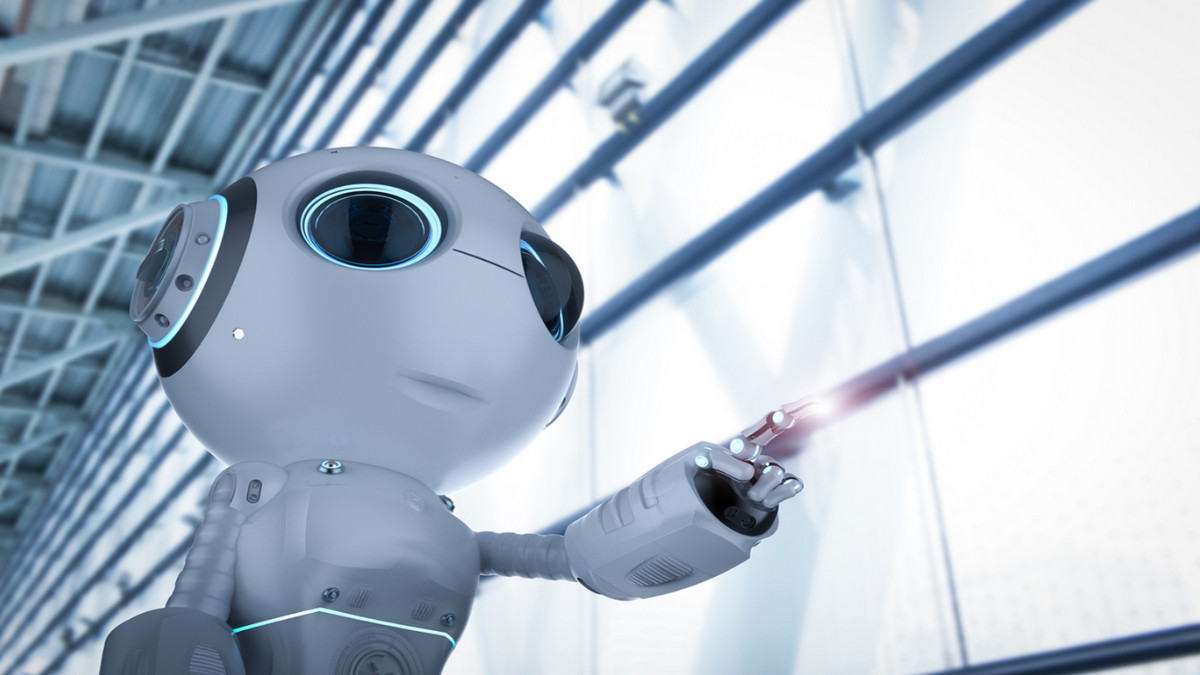Artificial intelligence has brought in a new generation of robotics technology: Robotics 2.0. The principal challenge is the transformation from original manual programming methods to true autonomous learning. Faced with this challenge for innovation in AI robotics, how can Taiwan's manufacturing industry best seize the opportunity?
What is an AI Robot?
AI Robots are the artificial agents acting in the real-world environment. Changes in the field of robotics and AI, are causing manufacturers to change from automation processes traditionally used in production, to processes using autonomous learning. Beyond the robot’s ability to handle routine tasks, robots can now also respond to changes in input given by humans and the environment.
Current State of Manufacturing Automation
According to a recent report issued by the International Federation of Robotics (IFR), global shipments of industrial robotic arms set a record in 2018, reaching 384,000 units. Among the major importing countries, China was the largest market (accounting for 35%), followed by Japan and the United States. Taiwan ranked sixth in the world.
Automobile and electronics manufacturing is still the largest application market for industrial arms, accounting for about 60%, which is higher than other industries such as metals, plastics, and food.
Due to the limitations of traditional robots and computer automation, at present, except for the automotive and electronics industries, almost none of the warehousing, agriculture, and other industries have begun to use robotic arms. This situation will be changed by new technologies such as AI robots and deep learning. Automation and industrial robotic arms have been in the manufacturing industry for decades, but even the most automated automobile manufacturing industry is still a long way from the so-called lights-out factory. For example, most parts of car assembly are still done manually. This is also the most labor-intensive part of the car factory. On average, two-thirds of the employees in an automobile factory are in the assembly workshop.
Why is Full Automation Difficult?
Technical limitations that automation has not been able to overcome so far.
Today's automated production lines are generally designed for mass production. They can effectively reduce costs, but lack flexibility. As consumers prefer products with shorter and shorter life cycles, the demand for customized production increases. Humans are often more capable of responding to these new product lines than robots, as they do not need to spend a lot of time to rewrite programs or change manufacturing processes.
-
Dexterity and Complexity
Despite rapid advances in technology, humans are still much more dexterous than robots. Although assembly processes have been highly automated, they still need to be programed using manpower.
Material preparation required in manufacturing and warehousing is an area where production efficiency can be improved. In the process of assembling, all the parts needed for assembly can be placed in a tool kit. The robot can then take each part from the toolkit and perform assembly operations. If each part is in its fixed position and angle, automatic programming is relatively easy. On the contrary, where it is necessary to identify and retrieve parts from disordered parts boxes, it is a challenge to existing machine-vision and robotics technology.
-
Visual and Non-Visual Feedback
Many complex assembly operations require the experience or feeling of the operator. Whether it's installing a car seat or putting parts in a toolkit, these seemingly simple actions require operators or robots to receive and adjust the angle and strength of the actions based on various visual and even tactile signals.
These fine adjustment requirements make traditional automated programming almost useless, because every time you pick or place an item, the process is not the same. You need to have the ability to learn from multiple attempts, and summarize the required action needed, as a person would. However, machine learning, especially deep and reinforcement learning, can bring major changes to robotics.
Robotics 2.0: What Can AI Enable Production To Do?
The biggest change that AI has brought to robotic arms is: In the past, robotic arms could only repeatedly execute programs written by engineers. Although the accuracy and speed were high, they could not cope with any environmental or process changes. But now because of AI, machines can learn more complex tasks on their own.
Specifically, AI robots have major breakthroughs in three major areas compared with traditional robotic arms:
-
Vision System
Even the highest-end 3D industrial camera still cannot judge depth and distance accurately like the human eye can. They also cannot identify transparent packaging, reflective surfaces, or deformed objects. Machine vision has made great progress in the past few years, using deep learning, semantic segmentation, and scene understanding to improve the depth and image recognition of low-end cameras. This has allowed manufacturers to obtain sufficiently accurate images without using expensive cameras. This image recognition can successfully identify transparent or reflective object packaging.
-
Scalability
Deep learning does not need to construct a 3D model of each item in advance like traditional machine vision. Just input the picture and after training, the artificial neural network can automatically recognize the objects in the image. It can even use unsupervised or self-supervised learning to reduce the need for manual labeling of data or features. This allows the machine to learn in a way closer to how humans do, eliminating human intervention, and allowing the robot to face new tasks without the need for engineers to rewrite programs. With the continued operation of the machine, more and more data are collected, and the accuracy of the machine learning model is further improved.
Since deep learning models are generally stored in the cloud, robots can learn from each other and share knowledge. This not only saves on the learning time of other machines, but also ensures the consistency of quality.
-
Intelligent Placement
"Please handle with care, or arrange the items neatly", this is a huge technical challenge for the robotic arm.
How to define "handle with care"? Does it stop applying force the moment the object touches the desktop? Or is it moving to a certain distance and letting go to let the object fall naturally? This is a test of the technology.
It is even more difficult to "arrange items neatly." In order to accurately place items at the desired position and angle, we must first pick up items from the correct position. The robotic arm is still not as dexterous as a human hand. Most robotic arms use suction cups or clamps, and there is still a long way to go to achieve the flexibility of human joints and fingers. Secondly, we need to be able to instantly determine the angular position and shape of the object being gripped. We need to know where other objects or obstacles are in order to judge where to place items to save the most space.
Through AI, the robot arm can judge depth more accurately, and can also learn to improve through training. Items can be placed face up, face down, or in other varying positions. You can also use Object Modeling, or Voxelization, to predict and reconstruct 3D objects so that the machine can more accurately determine the size and shape of the actual object, and place the object in the proper position.
How Will AI Robots Affect the Manufacturing Industry?
Existing players in the industry generally choose to focus on continuous innovation and improve existing products and services in order to serve existing customers. At this time, some small companies with fewer resources can seize the opportunity to target neglected markets and gain a foothold in these markets. AI robots will bring disruptive innovation to the manufacturing industry.
Disruptive innovation is divided into the following two types: low-level market innovation and new market innovation. What AI robots bring is disruptive innovation to new markets. New market innovation refers to innovation brought about by new companies aiming at new markets which existing companies have not yet served.
With the automotive and electronic manufacturing industries accounting for 60% of industrial robotic arms, many manufacturers focus on continuous innovation to do what they are best at and what customers need most to further improve speed and accuracy. Warehousing, food manufacturing, and material preparation procedures have been neglected. Customers are not lacking high-speed and high-precision robotics, but they are looking for robotic arms that are more flexible and able to learn to perform differing tasks with flexibly. Seeing this unmet demand, AI Robotics Company began to apply artificial intelligence to robots so that robotic arms could be used in new markets such as material preparation, packaging, and warehousing. Lower-level cameras used in machine learning models automate procedures such as material preparation and cargo sorting whuch could only be done manually in the past. Robotic arms can be used in more places, and over a vast range of industries.
Challenges and Opportunities Brought About by AI Robots
The combination of AI and robots brings many possibilities, but these changes will by no means come overnight. Even if robotic arm companies begin to invest in AI, they must also think about how to rebuild their organization and development strategies to minimize the negative impact of transformation and meet the demand presented by each company's management.
On the other hand, developing new markets is by no means a simple matter. Start-up companies still need to work closely with manufacturers to develop solutions that better meet customer needs. The manufacturing process is even more complex and diverse than warehousing. Although start-up companies understand AI and robotics technology, they do not necessarily understand the manufacturing process. This also gives Taiwanese manufacturers the best opportunity to seize the opportunity to grow and transform.
Taiwan's development of artificial intelligence in the manufacturing industry not only brings the advantages of understanding application cases and mastering data, but also achieves the goal of industrial transformation by using new technologies such as AI robotics.
If Taiwanese manufacturers can take the lead in cooperating with these start-up companies, they can not only improve production efficiency and quality through process automation, but can also provide customized solutions for processes that were difficult to perform in the past. By moving away from the strategies of mass manufacturing and price-cutting competition, international startups can become a testing ground for a new generation of AI robots, and develop exclusive solutions for the electronics or semiconductor manufacturing industry, thereby increasing export production.






.png)







